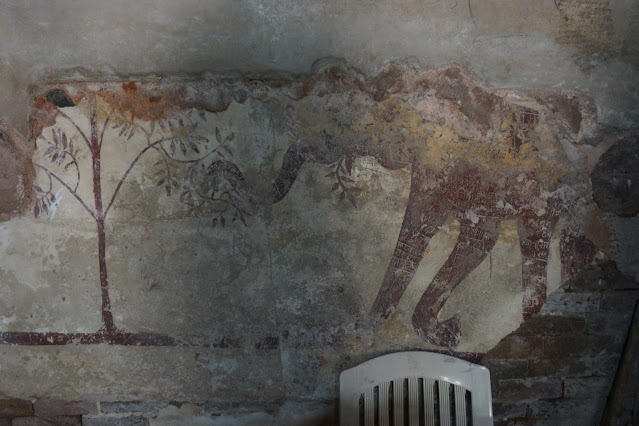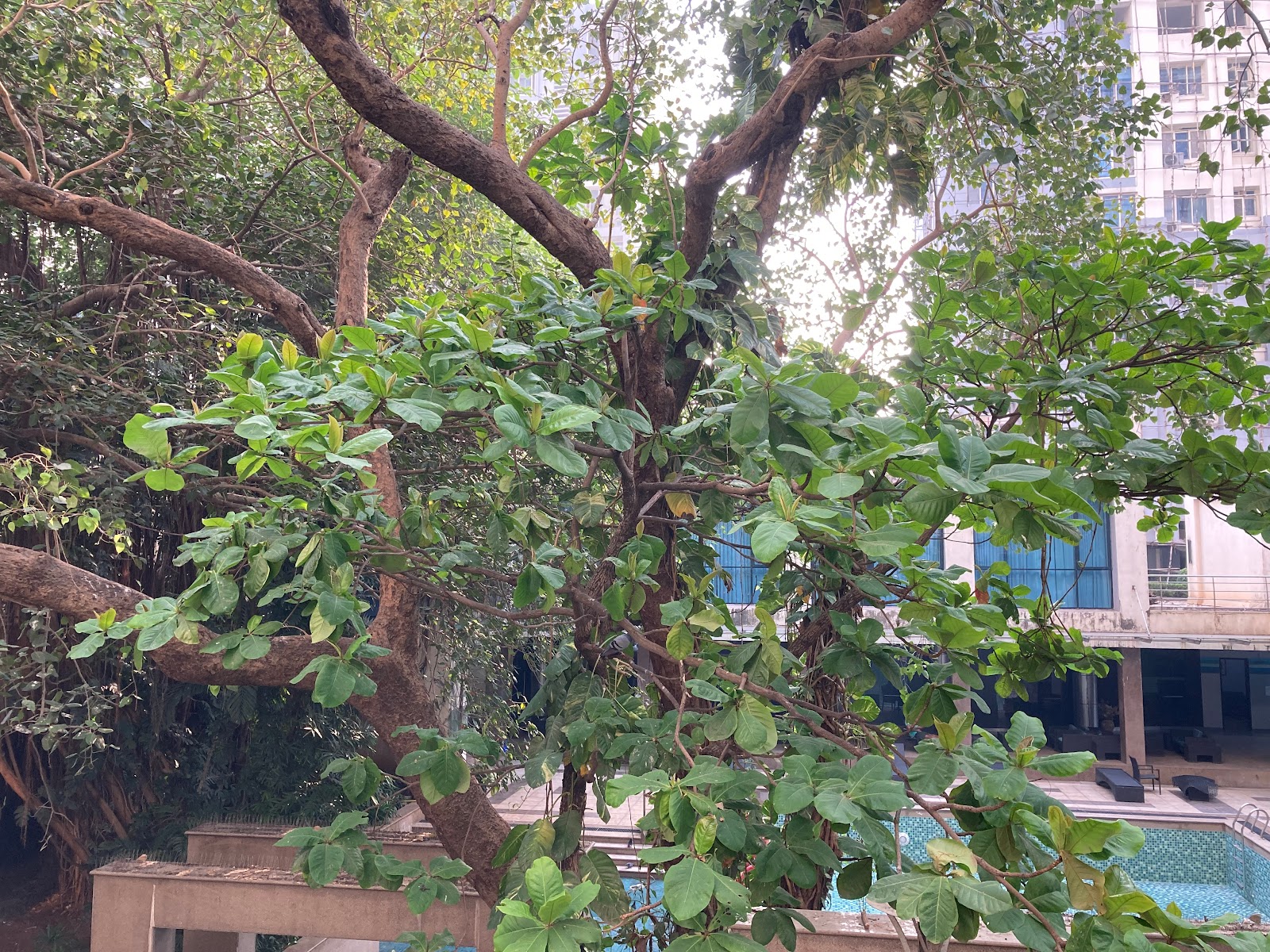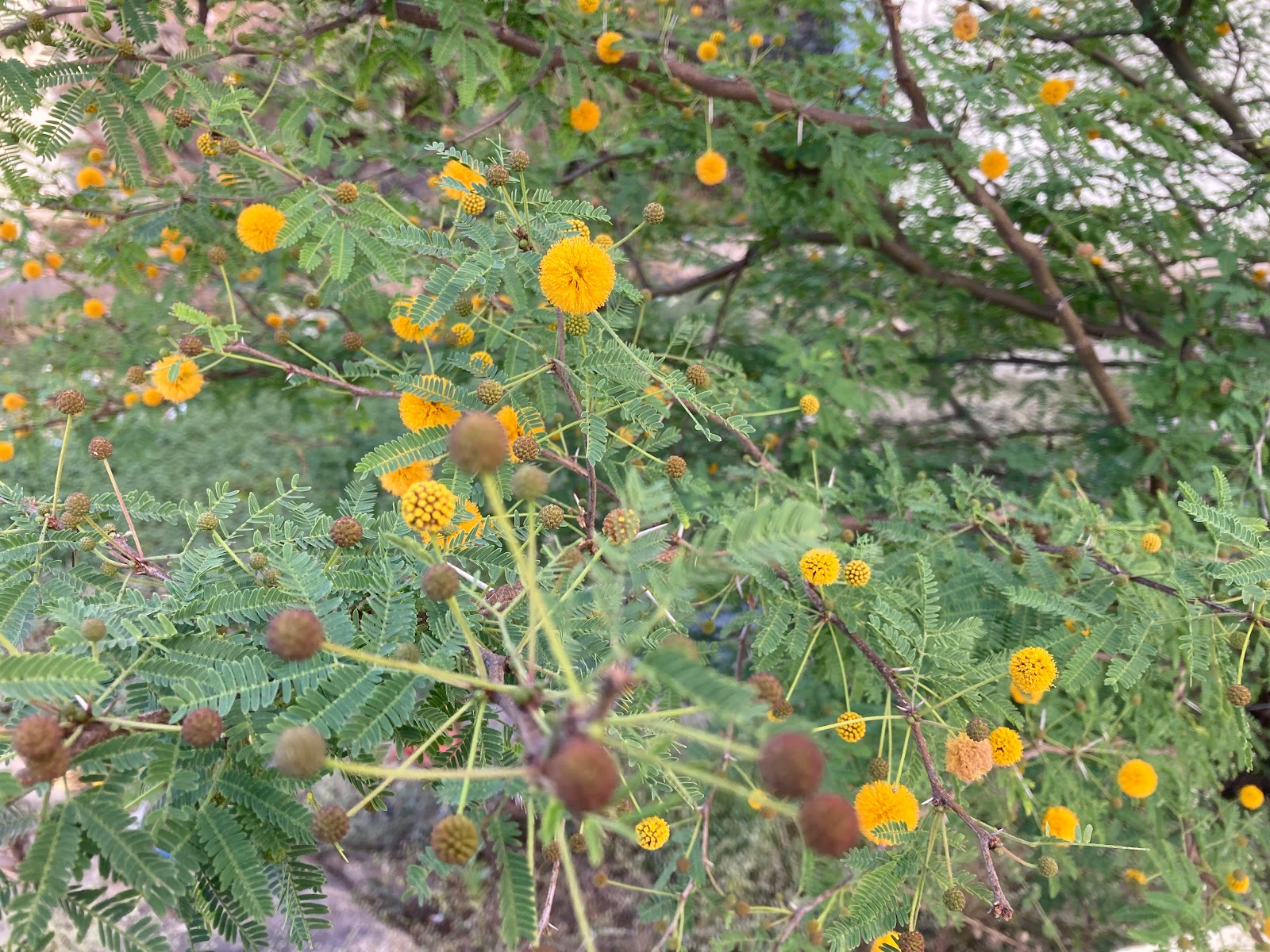6th December 2023
Mt Abu
As usual, I was confused, I had understood that we were going walking to Guru Shikhar, which is the highest point on the Aravallis near Mt Abu, but instead we were here.
 |
| The colourful elephants at the entrance did not raise my enthusiasm to go in. |
 |
| I peered through the covered tunnel passage to see this. Still not enthused enough to remove shoes and go in, I hung around outside initially until Arjun hurried back out and said that we were being given a history talk of the place by Mr Daivat Singh of Sirohi! |
And so in I went and was so glad I did, as we were enthralled with some great storytelling of legend and history of the Achaleswar temple, told with humour, personality and objectivity.
The previous night at dinner, Nino, had shared some legends of Mount Abu - Arbuda the serpent who saved Nandi over here, and another one about how Devi Parvati's lips (arbuda) fell here, and hence Arbuda, became Abu....
And now, we heard of the legends related to this temple. The region was prone to tremors and instability and the local chieftains prayed to Kashi Vishwanath, who stabilised the hills by placing one toe...and so it moved from chal to achal or stability. (The deity within is not a typical lingam but a toe like protrusion in a hollow. The hollow is the hole caused by the toe if I got it right, and goes all the way to naraka)
The legendary bees of Mount Abu
Another Alauddin Khilji story. As he was making his way from Ahmedadabd, his henchmen mentioned about the riches of the temples of Mount Abu, and so up he came with his 1200 plus horsemen, looted Delawara temples and set his sight on Achaleswar. The local warriors were only 100 strong, and decided that rather than dying and causing bloodshed at the temple, to go and meet the incoming troops head on, and so off they went, fighting ferociously - and miraculously the angry bees of Abu came buzzing along and attacked and stung the Khilji forces, and only them...making them turn tail, surrender arms and basically leave the place.
I mulled and pondered and decided those must have been those rock bees -
Apis dorsata - the "rajput" bees - aggressive defenders of their territory!
The surrendered arms and other weapons were melted into a Trishul and offered at the temple, the account goes.
Re-discovering the beautiful marble carvings
These marble carvings seen below were hidden behind chunaam and plaster and revealed only in 1979 by accident! Mr Daivat and even Priya remember the chunaam pillars and facades. Some "damage" accidentally displaying what was under. Since then, they have been slowly and carefully cleaned and the beauty revealed.
Whether this was done to protect the pillars from harm or it was an act of careless beautification was unclear. It's quite astonishing how there is so little documentation at institutional level...everything is word of mouth. Quite contrary to the British obsession with classifying and documenting?
 |
| I admired the delicate filigree-like rosettes, monkeys, Devis, apsaras and assorted figures around the doorway. Marble slabs, whittled away with perfect artistry. |
 |
| There are two new restored figurines - find them. |
 |
| Achalgarh fort..way up there. |
 |
| And so we emerged out from the 13th century again, back to 21st century India, greeted by a different kind of Nandi, |
 |
| and Lucky's Wax Museum! |
Anyways, the moral of this story for me was never judge a temple by the well meaning beautifications outside.
 |
We wound our way up some beautiful Aravali landscapes - scrubby, with small lakes in the valleys.
|
We shared a ride with Arjun and Gapi in their little chariot that Arjun hustled around the hill curves with skill and casual ease (while I kind of hung on) - we were now up on our way to Guru Shikar - the highest point in the vicinity, where we encountered further 21st century Indian architecture and garbage (lack of) management.
 |
| It was advisable to keep one's eyes on the distant vistas and admire the spectacular views. |
In averting my gaze from the foreground muck, I almost missed the Brown Rock Chat sitting on the rock and posing this way and that. She cheered me up, but also made me feel so shameful...how we spoil things for every creature on this planet, uff!
The delightful Wordsworth Lodge was where we headed for lunch. The website has the Wordsworth story in a nutshell. Some lovely pictures too. There is a romantic history behind this lovely Boutique Hotel, hidden on a forested foothill of Gurushikar, the tallest mountain in the Aravali Range. In 1965, an English woman named Diana Wordsworth, a collateral descendant of the poet William Wordsworth, travelled to India to work on a film about the Ganga and fell in love with the country and with a colonel in the Indian Army, Buddha Sen. The couple resolved to retire together and began a search for a likely spot in one hill station or another. At a chance meeting with Fateh Singh Rathore, who would one day become India’s best-known defender of the tiger but was then a young game ranger stationed at Mount Abu, he suggested they consider Rajasthan’s best-known hill station, instead.
He helped them find the perfect spot on which to build their home. It was designed to complement the unique landscape by a rising young Mumbai architect named Rumy Shroff, but Fateh helped with every aspect of its construction. Sadly, the colonel passed away before the house was finished and when Diana Wordsworth died in 1984 she left it to Fateh whom she had come to see as her surrogate son.
Now, Fateh’s son, Dr. Goverdhan Singh Rathore, has lovingly restored and renovated Wordsworth Lodge so that visitors can experience for themselves the spectacular views and serene natural surroundings just as they were more than half a century ago.
I sunk into a chair on the verandah surrounded by trees, breathed the foresty air and watched.
 |
| I was also being watched. A grey langur mother and baby stared, alert to danger. |
 |
| A Treepie watched, hoping for some morsels. |
And it was on to lunch - and then much confusion about walking or driving to Trevor Tal, or back to the hotel etc etc.





















































